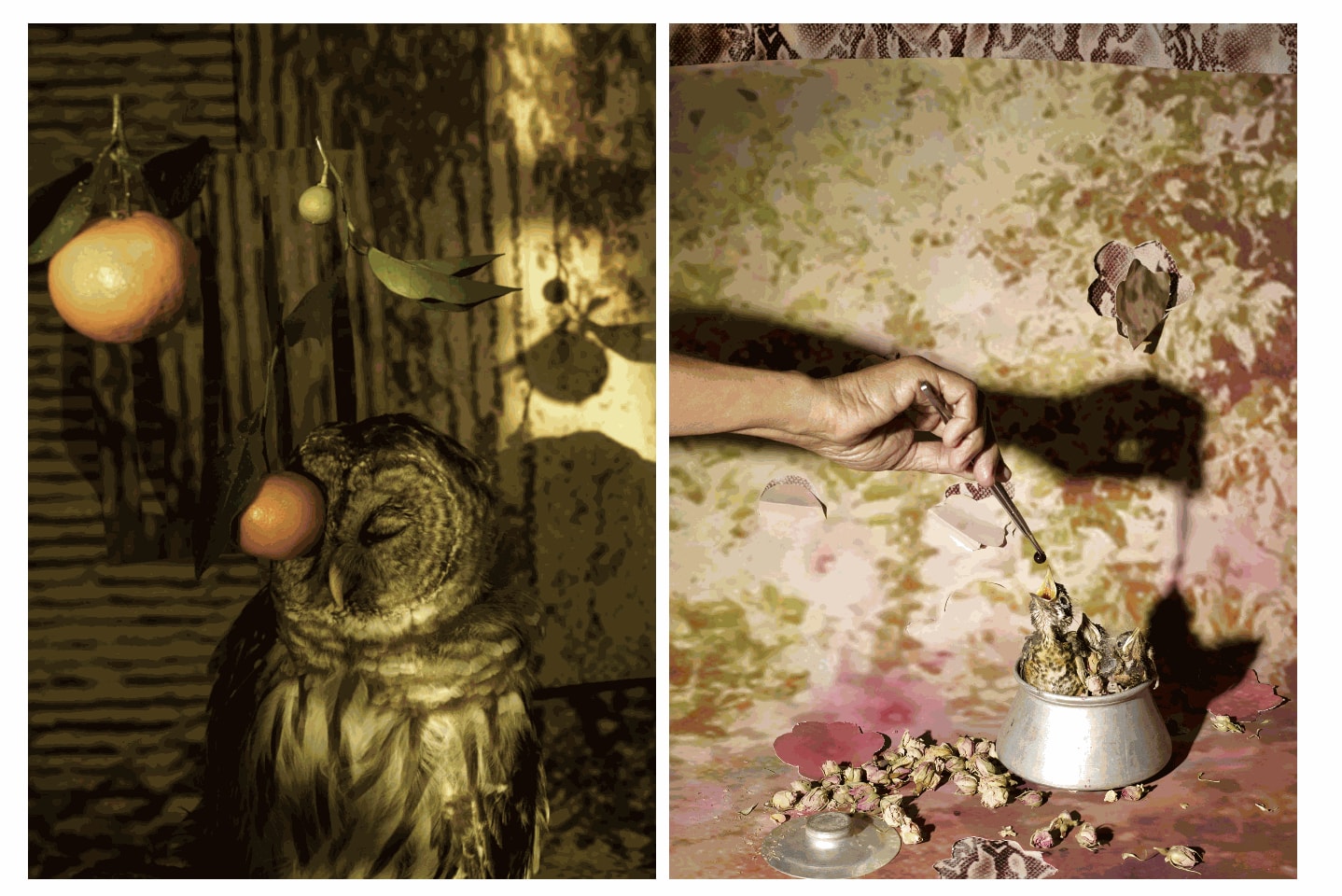05 March 2024 The artist’s work is the cognitive equivalent of a rock-climbing wall, in which visual handholds open up interpretive pathways.
To hear Iranian-American artist, educator, and wildlife rehabilitator Sheida Soleimani tell it, there was a time when she worked hard to compartmentalize her various occupations and personas.
“I have had three different kinds of working identities at any given point, and for a really long time I kept those separate,” Soleimani told Hyperallergic in an interview. “It was like Sheida-the-artist makes work that politically engages with the greater SWANA region, and Sheida-the-bird-rehabber does wildlife work, and then Sheida-the-professor teaches about art and activism. It was getting to the point where I asked myself: Why am I working so hard to keep all of these identities separate? I think part of being an artist is having a kind of weird, blended life, and allowing things to collapse in on each other.”
Case in point, during the interview, which took place over Zoom, a pair of parakeets flew over to perch upon Soleimani. The duo recently crossed over from her avian rehab facility, Congress of Birds, into the menagerie of personal pets that live in her home.
“Someone dropped them off on the doorstep in a bag that said ‘Happy Birthday’ on it, and they were teeny-tiny,” Soleimani said, a juvenile yellow parakeet roosted inquisitively on her shoulder. “It was the middle of winter, a weird time of year for baby birds. So I got in touch with a parrot sanctuary, and they were happy to take them, but not until I hand-fed them enough to get them eating on their own.”
Soleimani found herself charmed by the sociability of the parakeets, and made them a permanent part of her home.
“They’re a bird version of a lap dog,” she laughed.
Soleimani learned the practice of bird rehabilitation from her mother, part of a cultural inheritance that also included deep trauma. In Iran, her pro-democracy parents were incarcerated; they eventually escaped and resettled in the United States. Earlier bodies of work, such as 2018’s Medium of Exhange and 2020’s Levers of Power, have dealt with the international politics and oil commoditization of Iran and the surrounding region in a broader way.
Her most recent photographic series, Ghostwriter (2021–23), takes a much more personal tack. Not only are the stories close to Soleimani’s heart and family, but they are living stories, in a literal sense — she employs the birds and her own parents as subjects. With a unique style that bridges photography, installation, and collage, Soleimani creates densely symbolic and textured tableaux that demonstrate the synthesis between the worlds that Soleimani struggled for a time to keep separate.

Sheida Soleimani, The Blind Owl, 2023, archival pigment print,14 x 11 inches (left), and Sheida Soleimani, Safekeeping, 2023, archival pigment print, 24 x 18 inches (right).
“I think a lot about being of the Diaspora, being an immigrant, and what it means to have a home,” said Soleimani. “I think home is actually just a collage of a bunch of different things, and collage is also really important in my practice.” In layering and building her images, Soleimani contemplates ways in which we assign hierarchy based on perception of the subject — including whether it is living or animate — and whether that hierarchy can be flattened.

